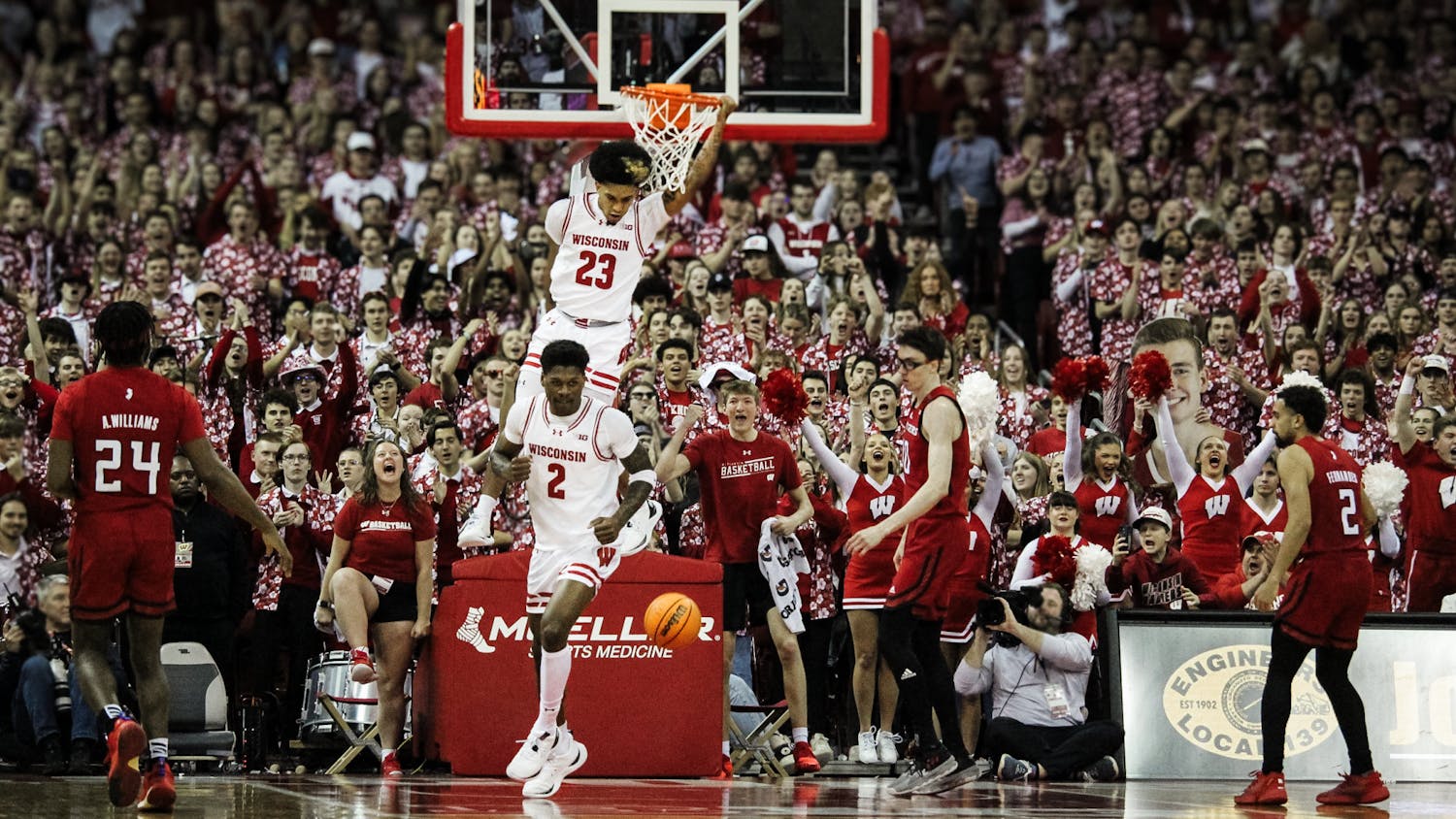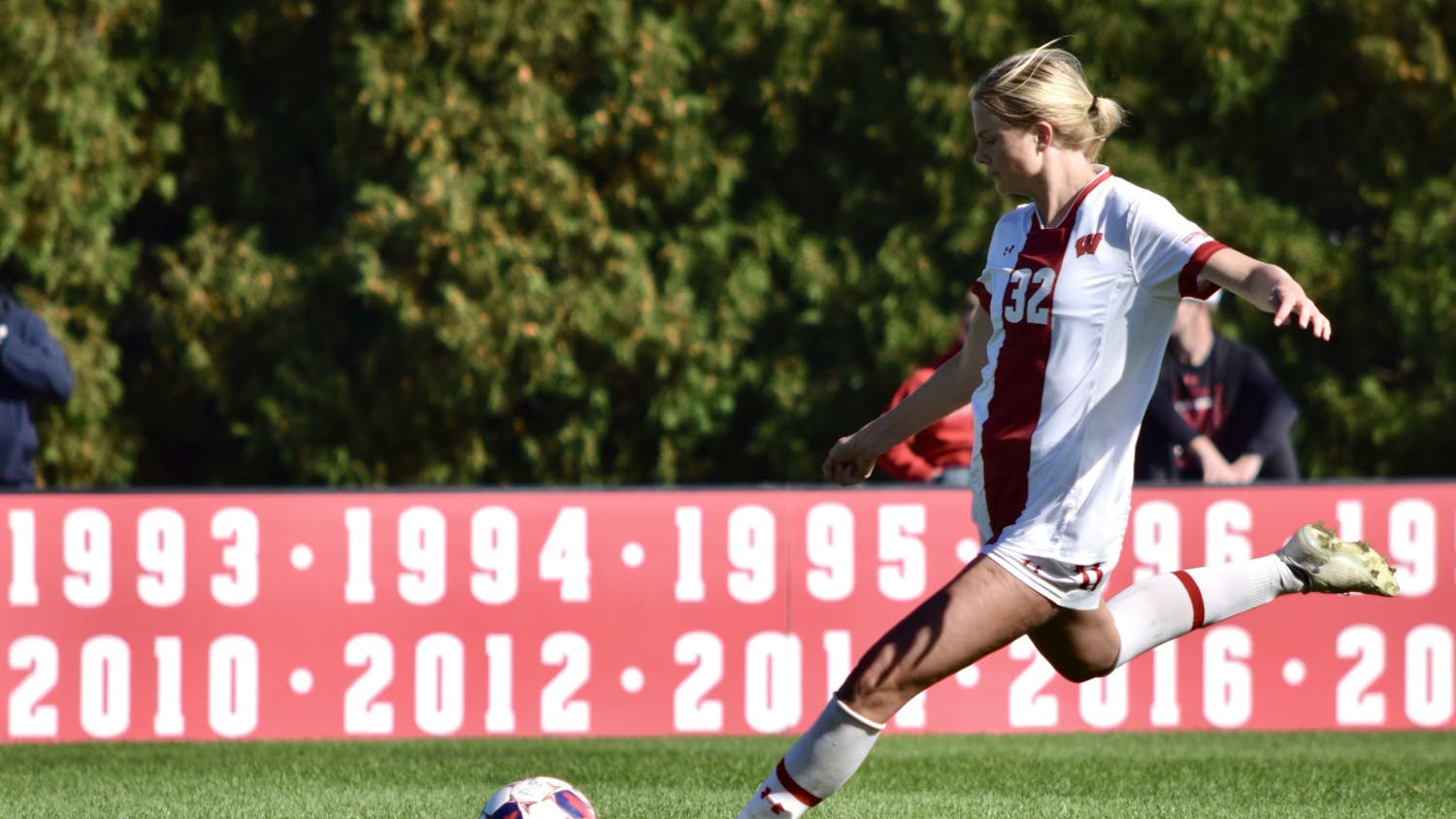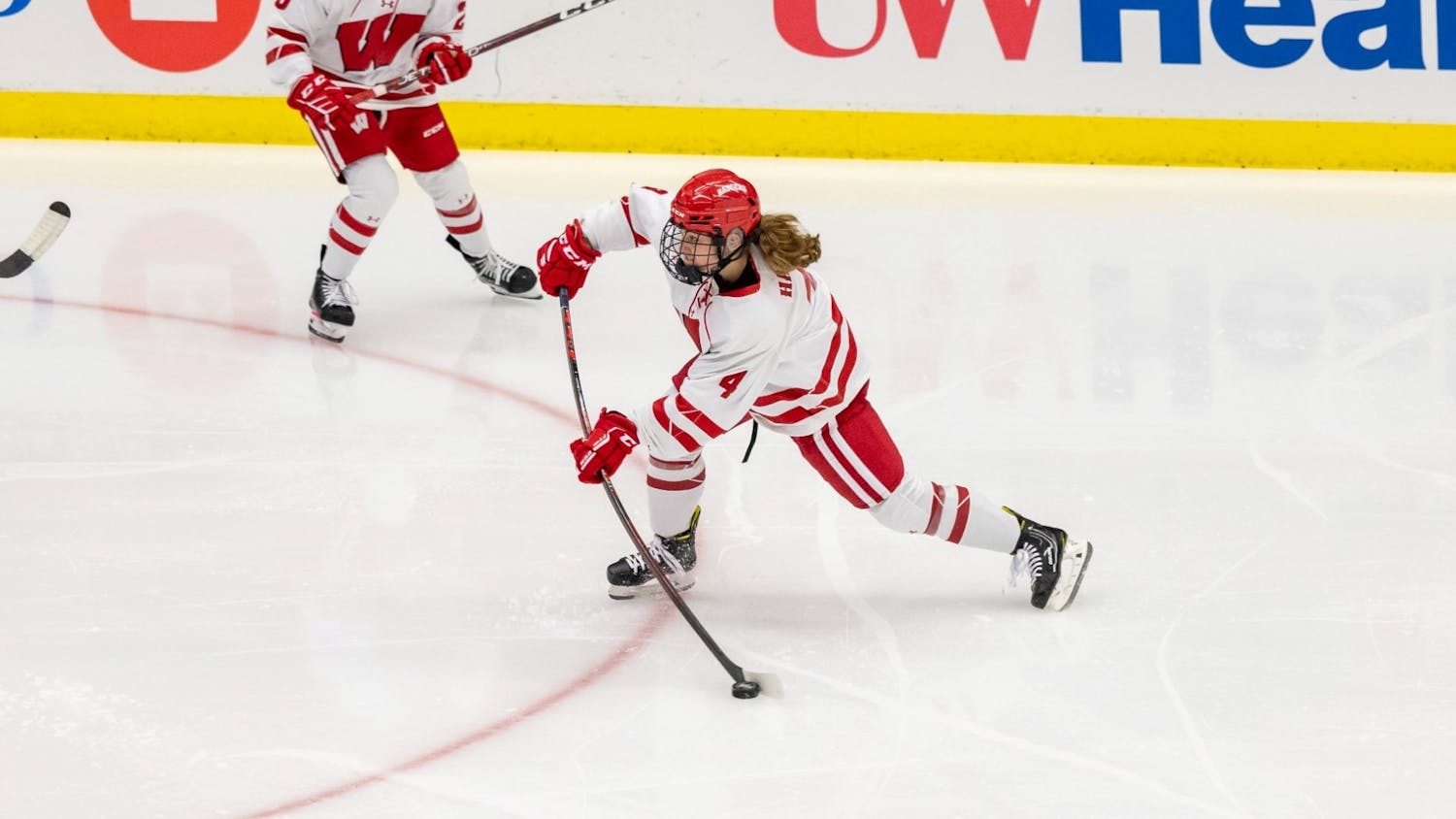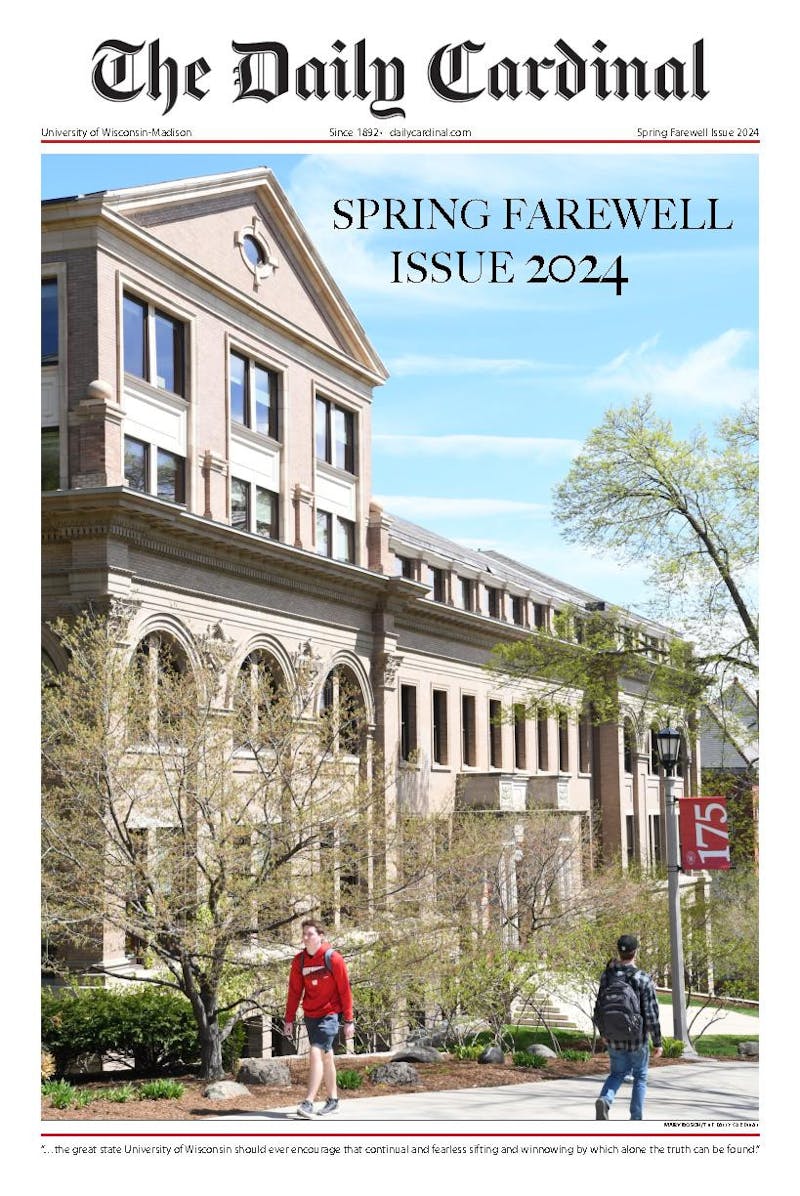Following the highly anticipated tilt against LSU to open the season, the remainder of the Badgers’ schedule gets a little bit easier. Here’s a breakdown of the other 11 games.
Wisconsin’s projected record: 11-1
vs. Western Illinois
Sept. 6
There’s not much to say here. Wisconsin makes its home debut against an FCS program that went 4-8 in 2013. The combined opponent record in the Leathernecks’ four victories was a paltry 11-36.
Western Illinois at least returns two key players on its defense: lineman Gino Durley Jr. and linebacker Kevin Kintzel. Those two combined for 19 tackles for loss and 7.5 sacks. On offense, running back J.C. Baker comes off an 1,100-yard season in which he averaged over five yards per carry and scored six touchdowns.
Regardless, this one will not be close. If Badger fans are looking for a game to fully enjoy their Breese Terrace tailgate parties, this is it.
vs. Bowling Green
Sept. 20
Much like Wisconsin’s 16-14 squeaker over Utah State in 2012, this game will likely be a lot closer than most people expect. Bowling Green won last year’s MAC title by stomping previously unbeaten Northern Illinois in the conference championship and won 10 games for the first time since 2003.
The Falcons begin their first season under the tutelage of head coach Dino Babers. Besides having a name befitting a 1950s nightclub singer, Babers has an impressive resume. He spent four seasons as the wide receivers coach at Baylor working with future NFL players Kendall Wright and Terrance Williams alongside quarterback Robert Griffin III.
Babers then spent two seasons in his first head coaching gig at Eastern Illinois. Retaining many elements of Art Briles’ high-flying Baylor offense, Babers oversaw quarterback Jimmy Garoppolo’s 5,000-yard, 53-touchdown season last year.
At Bowling Green, Babers inherits a roster already full of offensive talent. Quarterback Matt Johnson threw for nearly 3,500 yards and 25 touchdowns while throwing just seven interceptions. He thoroughly outshined fellow quarterback and Heisman candidate Jordan Lynch in the MAC title game, tossing five touchdowns and completing 77 percent of his passes.
Though both of the Falcons’ top pass catchers are gone, they still retain four receivers who were targeted at least 30 times. In the backfield, Bowling Green’s top four running backs combined to average 5.4 yards per carry. All four of those backs return in 2014.
The defense isn’t quite as exciting as the offense. While the secondary was the strength of the defense, allowing an opponent completion rate of just 55 percent, the Falcons struggled against the run, giving up 4.5 yards per carry.
Bowling Green’s offense is intriguing and the Falcons might be the favorite to repeat as MAC champions. However, the defense will struggle to contain the Badgers’ two-headed rushing attack. Melvin Gordon and Corey Clement will both have big games as Wisconsin wears down Bowling Green in the fourth quarter.
vs. South Florida
Sept. 27
It might be hard to remember, but South Florida was once ranked No. 2 in the nation during the wild 2007 college football season. The Bulls followed that up with three straight postseason victories in a bunch of nondescript bowl games.
Since then, however, not much has gone right in Tampa. The Bulls won just 10 games in the past three years. Last season under first-year head coach Willie Taggart, South Florida went a putrid 2-10 and was blown out 53-21 by McNeese State, the biggest loss ever by an FBS program to an FCS one.
The Bulls now find themselves in the midst of a major rebuild. Down the stretch last year, Taggart blew up the team and gave major playing time to a variety of freshmen and sophomores. According to 247 Sports, he also landed the best recruiting class in the American Athletic Conference this year by a substantial margin.
Taggart, who led a quick turnaround at Western Kentucky before taking the South Florida job, seems to have the program headed in the right direction. While help is coming in the future, the Bulls still face an uphill climb .
Sophomore Mike White was recently named the team’s starting quarterback following a freshman campaign in which he threw three touchdowns and nine interceptions while splitting time. The defense was mediocre last year, lost several key players and now finds itself in a transition to a 3-4 alignment.
South Florida has a rather weak schedule this season, so improving upon last year’s two wins is realistic. However, the Bulls won’t put up much of a fight against the Badgers. Wisconsin takes a comfortable lead into halftime and coasts to an easy win in its final nonconference game.
at Northwestern
Oct. 4
The Wildcats absolutely fell apart last year, going from a 4-0 start and a No. 16 ranking to seven straight losses and missing a bowl game for the first time since 2007.
During the seven-game losing streak, Northwestern also lost four consecutive one-possession games. Horrible luck like that probably won’t recur, but then again ask Wisconsin about its recent inability to win one-possession contests (3-13 in the Badgers’ last 16 such games).
With quarterback Kain Colter gone, Trevor Siemian will take over as the full starter, ending the two-quarterback system that was in place the last two seasons. Siemian needs to improve on his awful 11:9 touchdown-to-interception ratio and his mediocre 59 percent completion rate.
Running back Venric Mark was supposed to return after missing most of last fall with an ankle injury but he recently transferred to West Texas A&M. That leaves Treyvon Green as the starter, who posted solid numbers last year but has nowhere near the explosiveness of a healthy Mark.
The Wildcats’ defense is deep and full of experience but Northwestern needs to improve on a pass rush that ranked in the lower half of college football last year in a number of advanced stats.
While the defense as a whole limited big plays last year, its breakdowns almost always came in the secondary. This is due in part to the weak pass rush—giving an opposing passer extra time is obviously never a good thing. However, the secondary could afford to make more plays on its own. Less than a third of the Wildcats’ impressive 19 picks came from cornerbacks and safeties.
Northwestern should return to being a middle-tier school in the Big Ten. But the Wildcats do not have enough offensive playmakers to compete against the Badger defense. This is Tanner McEvoy’s breakout game as Wisconsin starts off conference play with a win.
vs. Illinois
Oct. 11
Illinois has somehow played in a Rose Bowl more recently than Michigan. Feel free to reread that sentence. It came in that crazy 2007 season that also saw the Wolverines lose to Appalachian State at home and Kansas win the Orange Bowl. There’s no telling what was in the water that year.
The Illini have since returned to being a Big Ten also-ran, appearing in (and winning) just two bowl games in the past six years. Third-year head coach Tim Beckman may be on the hot seat this year if he doesn’t improve on his 6-18 record.
Quarterback Nathan Scheelhaase has graduated, a rather prolific passer who went unnoticed during Illinois’ decline. Wes Lunt now steps in as his replacement after winning the training camp battle over two other candidates. Lunt sat out last season after transferring from Oklahoma State, where he started five games as a true freshman in 2012 and posted so-so numbers until injuries forced him out of the lineup.
With both Scheelhaase and the team’s three leading receivers no longer with the team, offensive coordinator Bill Cubit needs to forego his pass-first philosophy and focus on running back Josh Ferguson.
Last year, Ferguson was one of the nation’s most explosive backs in terms of frequently getting downfield (a stat known as opportunity rate) and what he did when he got there (highlight yards). His numbers in each of these categories were parallel to elite runners like Melvin Gordon and LSU’s Jeremy Hill.
The Illinois defense has taken a tremendous step back over the past three seasons, going from eighth in the country in Defensive F/+ (an advanced metric that holistically ranks all FBS defenses) in 2011 to 100th last year.
Recent defenses have featured plenty of youth. Despite the newfound experience, there are major question marks surrounding the pass rush and defensive line, which in turn hurts the pass coverage.
The game plan against Illinois is to basically build an early lead against its porous defense, take the ball out of Ferguson’s hands and force the offense to rely on an inexperienced passing game. Wisconsin does just that and wins handily.
vs. Maryland
Oct. 25
The Badgers hit the second half of the schedule against one of the Big Ten’s new additions for 2014. The Terrapins have suffered awful injury luck recently, like last year when two former five-star receivers, Stefon Diggs and Deon Long, were lost because of broken legs.
Diggs and Long return this fall and are two of the best athletes on an offense already loaded with explosive players. Their three replacements filled in admirably last season, forming a deep receiving corps full of talent and experience.
Quarterback C.J. Brown also reprises his starting role. He is a dual-threat under center but must improve his mediocre passing numbers—a 59 percent completion rate with just 13 touchdowns and seven interceptions. Brown’s running numbers also dipped nearly three yards per carry between 2012 and 2013, though he did rush for an impressive 12 touchdowns.
For all the athleticism on offense, however, Maryland had a high number of three-and-outs and was rather inept at finishing drives, scoring an average of just 3.9 points per trip inside the opponents’ 40-yard line. The offensive line also struggled in both pass protection and short yardage running situations.
The defense brings back most of its important players. Against the run, the unit excelled, particularly in short yardage situations. The secondary was young and prone to breakdowns in pass coverage.
Diggs has garnered all types of preseason hype as a player to watch in the Big Ten and Wisconsin will have a tough time containing the Maryland passing game. The Terps are a unique challenge to the Badger defense, but their offensive inefficiency will be their undoing as Wisconsin pulls away in the second half.
at Rutgers
Nov. 1
According to overall F/+ ratings, the Scarlet Knights have managed to regress in six of the past seven seasons, a rather remarkable statistic. With its tough inaugural Big Ten schedule, Rutgers might make it seven years out of eight. Of its eight conference opponents, seven posted a winning record last year.
The Knights are really similar to fellow Big Ten newcomer Maryland in that they have athletic players at the skill positions to produce big plays but overall inefficiency that negates them. Rutgers matched the Terrapins’ 3.9 points per trip inside the opponents’ 40.
Still, the team does have weapons like oft-injured running back Paul James, whose explosiveness numbers are even better than Illinois’ Ferguson. Returner Janarion Grant is a major threat whether it’s on punts or kickoffs, with five returns of at least 40 yards and two touchdowns.
Defensively, the young secondary was annihilated last season. Rutgers allowed 170 pass plays of at least 10 yards, the worst mark in the nation, and gave up 58 plays of at least 20 yards, the third-worst total in the country. Opposing quarterbacks completed 64 percent of their passes for 31 touchdowns and eight picks.
The defensive line was the strength of the unit last year and at least has a potential all-conference player in tackle Darius Hamilton. Still, Rutgers was one of the nation’s worst at stopping the run in third and fourth down short yardage situations, giving up a first down or touchdown a hideous 80 percent of the time.
Rutgers’ major lapses in pass coverage and its inability to get off the field on third down will lead Wisconsin to put an absurd amount of points on the scoreboard.
at Purdue
Nov. 8
It couldn’t have been much worse for the Boilermakers last season. They went 1-11 and their lone victory came against a horrendous Indiana State team that also went 1-11 while playing in the FCS. Even that was a nail biter, as Indiana State threw a last-minute interception in Purdue territory to seal a 20-14 decision.
Purdue scored 14 points or fewer in six games last season and averaged the fifth-fewest points in the FBS. At the very least, the Boilermakers bring back most of their skill position players.
Purdue’s awful offensive line, which allowed 39 sacks overall, loses four of its starters. The unit was also horrible in short yardage running, succeeding on third-and-2 or shorter just 46 percent of the time.
On defense, Purdue created a havoc play (sack, tackle for loss, pass defensed or forced fumble) on just 11.5 percent of its snaps, ranking 117th in the country.
Wisconsin will use Purdue as its final tune-up game before the most challenging stretch of the schedule since LSU.
vs. Nebraska
Nov. 15
The Cornhuskers have somehow managed to lose exactly four games in each of the past six seasons. A program that once won three national titles in four years during the mid-1990s has since fallen off to become the epitome of college football’s second tier.
True to form, Nebraska might continue that four-loss streak in 2014. There are some of the nation’s best playmakers on both sides of the ball but also some major question marks that will hold the team back.
Sophomore quarterback Tommy Armstrong Jr. will start this year. He is a volatile player that averaged over 14 yards per completion but also one that only completed 52 percent of his passes and tossed interceptions on six percent of his throws. Armstrong is mobile but he is nowhere near the running threat former Husker quarterback Taylor Martinez was.
However, the offense does have Ameer Abdullah. The senior running back ran for nearly 1,700 yards while averaging six yards per carry last fall. He was one of the country’s best runners in terms of reaching the second level of the defense and gaining big yards once he got there. While his talent is a sure thing, Abdullah will be stuck behind an offensive line that returns a total of just 16 career starts, one of the lowest marks in the nation.
Junior defensive end Randy Gregory is rocketing up 2015 NFL Draft boards and could be one of the top picks next year. Gregory recorded 10.5 sacks last fall, the most in the Big Ten, and 16 tackles for loss.
Like the offense’s heavy reliance on Abdullah, Gregory is the main focal point of a defense that has its holes. There are concerns over the supporting cast in run defense and several redshirt freshmen will have to play big roles in the secondary.
If this game was in Lincoln, I’d probably pick the Huskers, but the Badgers do have homefield advantage. Regardless, this is Wisconsin’s second-toughest game outside of the season opener and will not be decided until the fourth quarter.
at Iowa
Nov. 22
After an Orange Bowl win following the 2009 season, the Hawkeyes have returned to the Big Ten’s middle tier. Iowa has won an average of seven games in the four seasons since then and has recorded just one bowl victory.
The Hawkeyes feature a mediocre but competent offense in 2014, led by quarterback Jake Rudock and a three-man running back committee. Rudock started off slowly last season but came on down the stretch, posting a passer rating of at least 127 in eight of the team’s final 10 games.
Still, the passing game offers nearly no threat to break off a big play. Last season’s top four receivers averaged a dismal 6.8 yards per target, ranking in the lower third of college football.
Because Iowa stayed healthy last year, the defense must now replace three starting linebackers and half its secondary with players that did not get much chance to play.
To illustrate this, the three departed linebackers combined for 35.5 tackles for loss, 11.5 sacks, six interceptions, six passes defensed and six forced fumbles. Their backups totaled 22 total tackles and zero of everything else.
The Hawkeyes do, however, play a weak schedule. They could win nine or 10 games and be a surprise contender for the division title. Iowa benefits from playing its most difficult opponent, the Badgers, at home and could make this one interesting.
Still, Iowa is devoid of standout players. While Nebraska has Abdullah and Gregory to complement a mediocre roster, there is nobody like that on either side of the ball for the Hawkeyes. Wisconsin’s talent advantage wins out here.
vs. Minnesota
Nov. 29
Wisconsin’s regular season comes to a close with a Thanksgiving weekend tilt for Paul Bunyan’s Axe. The Gophers haven’t won this rivalry game since 2003.
In 2013, Minnesota was a feel-good story as the team jumped out to an 8-2 start under inspiring head coach Jerry Kill. However, the Gophers dropped their next two games against Wisconsin and Michigan State, then inexplicably lost to a weak Syracuse team in the Texas Bowl.
It was indicative of Minnesota’s season, one in which the Gophers beat the teams they should have beaten (besides Syracuse) and fell to the better ones.
Quarterback Mitch Leidner completed 55 percent of his throws and averaged just six yards per attempt last year. A runner more than a passer, he was sacked on an alarming 14 percent of his drop-backs.
The identity of the Gophers’ offense, however, is its running game. Minnesota ran the ball on over 78 percent of its plays and had the sixth-fewest pass attempts in the country. The backfield has three strong runners in David Cobb, Donnell Kirkwood and Rodrick Williams, Jr., and Leidner was the team’s second-leading rusher last year with nearly 500 yards on the ground.
The defense was solid but unspectacular in 2013. It was often prone to slow starts but was still one of the nation’s best at shutting down opponents once they got inside the Gophers’ 40-yard line, allowing just 3.7 points per trip.
Minnesota must find a complementary player to defensive end Theiren Cockran. His 7.5 sacks last year were higher than the rest of the line combined. Improving the pass rush will help the secondary, which must deal with the loss of safety Brock Vereen to the NFL.
The Gophers’ biggest challenge will be winning against other second-tier teams like Iowa, Nebraska and Michigan. Succeeding there certainly gets Minnesota to its third straight bowl game, something that hasn’t happened since the team went to five in a row from 2002-’06.
Last year during Thanksgiving weekend, the Badgers were upset by an above-average team at home when Penn State quarterback Christian Hackenberg had his breakout game. Though you can draw a few parallels between these situations, the Gophers do not have a player like Hackenberg capable of taking over the game and Wisconsin retains the axe again.





